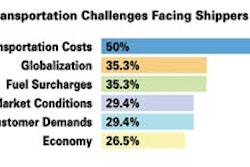By Art Knapp
The economic storm has forever changed how corporations manage costs in order to drive savings. From chief procurement officers to category managers, all levels of Procurement are under unrelenting pressure to reduce spending and eliminate inefficiencies in their services supply chain.
Today's corporations use outside services in virtually every line of business and geography to fill competency gaps (information technology, facilities and consulting) and outsource nonstrategic tasks (administration and landscape management). As a result, companies spend increasing amounts of their budget – often upward of 25-30 percent – on outside services.
As spending on services has accelerated in recent years, companies are looking for ways to bring more spend under management, which requires the adoption of a procurement solution. Unfortunately, most solutions are either feeble adaptations of goods procurement tools, single-point solutions rooted in ineffective legacy staffing delivery models, or are comprised of cobbled-together third-party solutions combined with staffing supplier oversight.
Missing the Mark with Staffing-based MSP Providers
The range of solutions available to manage service procurement has evolved immensely over the past 10 years. Surprisingly, many of the sources of today's services procurement optimization still come from within the services suppliers themselves. Not only is this a classic example of "the fox guarding the henhouse," but these suppliers also have no incentive to drive savings to their customers' bottom line. That is because these arrangements are plagued by an inherent conflict of interest, as service vendor business models are based on a high-margin pass-through of their own human capital resources. Without incentive to provide high-performance workers that increase per-dollar productivity, or to span and optimize services outside of the categories they own, this model falters due to limited or no competition.
Additionally, these suppliers lack the core competencies needed to expand the business case into other non-contingent categories and are either unwilling or unable to provide the transparency needed to leverage these service categories as a strategic advantage.
Combining third-party technology with managed service programs also misses the mark. An independent MSP has limited knowledge of the third-party software tool, often failing to properly configure the tool to fully leverage the functionality, while missing key areas of savings opportunity in the process. This creates a myopic view, with no access to, or ability to provide, a market-wide benchmark program, or compare third-party supplier performance against market data.
Many of these third-party independent tools also lack efficient scope. Functionality is limited to a single category, failing to scale globally in a true multitenant software-as-a-service (SaaS) model. This leads to an inability to support the key legislative and functionality requirements needed to provide a global solution to Global 2000 enterprises.
Intelligent MSP Coming to the Fore
All these shortcomings demonstrate the need for a new generation of services MSP solutions that provide customers with quantifiable decision-making information, year-over-year measurable savings, and the ability to expand across new geographies and service categories. This new generation of MSP solutions should also provide domain expertise in sourcing and procurement, objective analysis of market trends, and management of the performance and cost of an organization's services suppliers.
This type of "intelligent MSP" can provide a unique combination of managed services, real-time actionable information and a state-of-the-art services procurement platform to deliver the broadest view of savings. With the "intelligent MSP," decisions are always made from your side of the table, ensuring transparency and alignment with your overall business goals versus those of services suppliers and vendors.
Be wary of vendor "tricks" centered on hiding margin and limiting savings. Your MSP provider should offer deep category experience in multiple spend categories, with the objective of improving savings through better compliance or additional optimal sourcing, while monitoring supplier performance to drive quality and service improvements on your organization's behalf.
The continuous management and year-over-year improvements delivered by an "intelligent MSP" enables procurement executives to expand the value delivered into new lines of business, geographies and service categories, thus providing strategic value and driving increasing savings to the bottom line.
Such an MSP solution will play a major role in balancing the tension between economics and business execution, enabling CPOs, CIOs, human resources executives and other line-of-business managers to weather the current storm – while positioning them to thrive as business conditions improve.


















![Pros To Know 2026 [color]](https://img.sdcexec.com/mindful/acbm/workspaces/default/uploads/2025/08/prostoknow-2026-color.mduFvhpgMk.png?ar=16%3A9&auto=format%2Ccompress&bg=fff&fill-color=fff&fit=fill&h=135&q=70&w=240)
